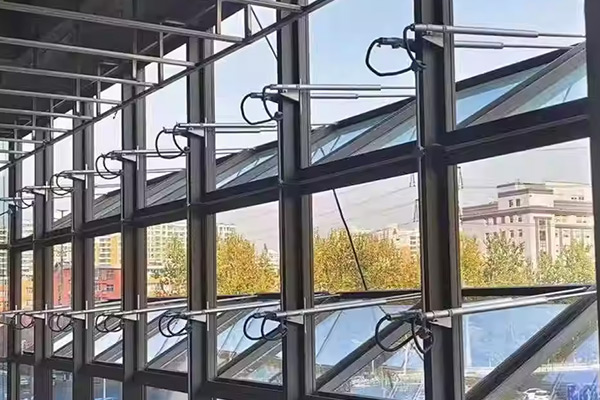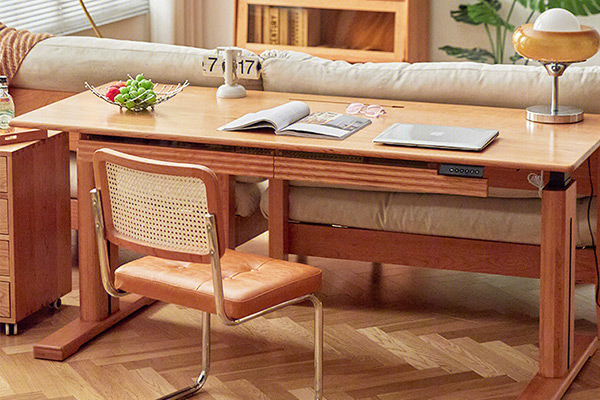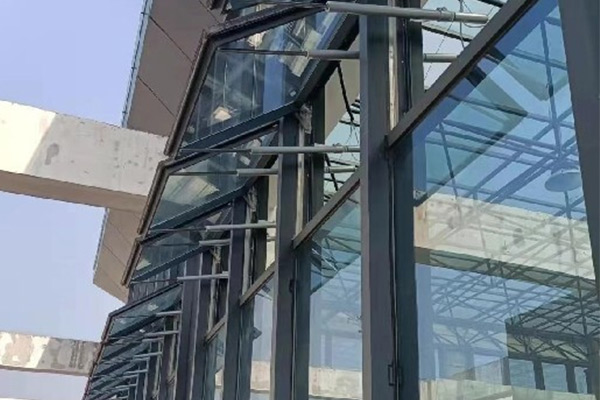Green Office: The Role and Value of Standing Desks in Sustainable Development and Environmental Protection
In today's society, the concepts of sustainable development and environmental protection have permeated all aspects of our lives, and the office environment is no exception. Traditional office models are being re-examined, as a healthier, more efficient, and eco-friendly "green office" trend is quietly on the rise. In this movement, the standing desk is no longer just a tool to improve personal health and work efficiency; it has, in its unique way, become a crucial vehicle for practicing sustainable development and environmental protection.
Standing Desks: The Shift from Personal Well-being to Environmental Friendliness
In the past, we focused more on how standing desks could mitigate the health issues associated with prolonged sitting. They encourage us to switch flexibly between sitting and standing, thereby relieving spinal pressure, promoting blood circulation, and increasing focus. However, when we broaden our perspective, we discover that standing desks play an indispensable role within the larger framework of a green office.
1. Reducing Resource Waste and Extending Product Lifespan
The value of an eco-friendly product is not only reflected in its function but also in its lifecycle. Standing desks are typically made from durable and recyclable materials such as metal, wood, or bamboo. Compared to a regular desk with a fixed height, the versatility of a standing desk means it can adapt to the needs of users of different heights and various work scenarios. When an employee is reassigned or changes roles, the standing desk can be easily adjusted to suit a new user instead of being discarded. This reusability significantly reduces the frequency of office furniture replacement, thereby conserving raw materials and the energy consumed during manufacturing. Many high-end standing desk brands also use FSC (Forest Stewardship Council) certified wood, ensuring that their raw materials come from sustainably managed forests, which reduces environmental damage at the source.
2. Saving Energy and Creating a Low-Carbon Office Space
While standing desks require electricity to power the lifting motor, the amount of power consumed is far less than one might imagine. Modern standing desks typically use high-efficiency, low-power motors and have a smart sleep function. When the desk is not in the process of moving, its standby power consumption is extremely low. More importantly, the standing desk model indirectly reduces reliance on equipment like air conditioning and lighting. For example, standing can boost the body's metabolism, making a person feel cooler and, to some extent, reducing the demand for air conditioning in the summer. Additionally, employees who feel more comfortable and energetic may be more inclined to work using natural light, reducing their reliance on artificial lighting.
3. Optimizing Space Layout and Improving Space Utilization
In modern businesses, office space rent and energy consumption are significant costs. The emergence of standing desks enables flexible work models such as "hot-desking" and "shared workspaces." By using standing desks, a single workstation can easily adapt to different employees' needs, eliminating the need to provide a dedicated, fixed-height desk for each person. This model not only effectively utilizes limited office space and reduces redundant furniture but also encourages employees to work more flexibly, which in turn cuts down on a company's investment in fixed assets and energy consumption, achieving a win-win for both the economy and the environment.
Looking Ahead: The Deep Integration of Standing Desks and Green Offices
As a physical carrier of the green office philosophy, the value of the standing desk extends beyond simple functionality. It reminds us that a healthy work environment is not only about individual well-being but is also closely related to the health of our planet. By choosing and using a standing desk, companies and individuals are taking tangible action to support sustainable development and practice environmental principles.
In the future, we look forward to seeing more breakthroughs in standing desk material innovation, such as the use of biodegradable composites or recycled plastics. At the same time, when combined with IoT technology, standing desks can become part of a smart office system, optimizing energy use through data analysis and further elevating their core position in green offices.
Ultimately, the realization of a green office requires a shift from philosophy to action, and the standing desk is a vivid footnote in this process. It not only improves our work experience but also, with its eco-friendly, efficient, and reusable features, contributes to building a sustainable future. Choosing a standing desk is choosing a healthier, smarter, and more environmentally conscious way of working—and it is a promise to our shared home.
-

Green Office: The Role and Value of Standing Desks in Sustainable Development and Environmental Protection
-

Green Office: The Role and Value of Standing Desks in Sustainable Development and Environmental Protection
-

Green Office: The Role and Value of Standing Desks in Sustainable Development and Environmental Protection
-

Green Office: The Role and Value of Standing Desks in Sustainable Development and Environmental Protection

